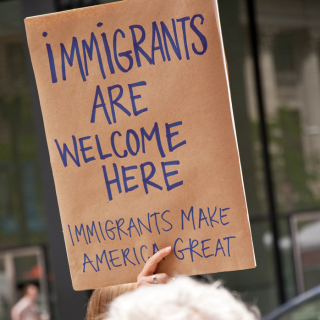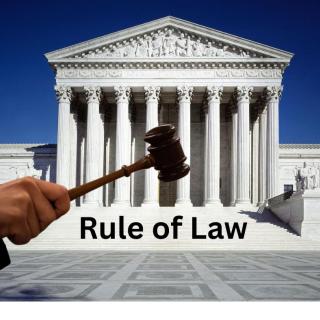In a primary race chock full of corporate-sponsored “establishment” candidates this past May, 5 candidates of the grassroots organization Yes We Can Columbuswon enough votes to run in the general elections for City Council and School Board this November.
In a city where the Democratic Party Machine holds a tight grip over local electioneering, this is a considerable achievement that is no doubt a reflection of growing dissatisfaction with the status quo in Columbus politics and part of the ongoingradicalization of sections of the Columbus community since Trump’s inauguration.
The International Socialist Organization shares the overarching goal of Yes We Can: to change the miserable conditions plaguing Columbus, and to shift power definitely out of the hands of the wealthy few into the hands of everyday people. We stand in solidarity with anyone working to achieve this aim and hope to continue to build a united front with Yes We Can and its supporters in the ongoing struggle toward this vision.
At the same time strategy and tactics matter. Columbus ISO has chosen to not endorse the campaign as an expression of our fundamental disagreement with its strategic orientation toward the Democratic Party.
In contrast to ignoring political differences via a“Diversity of Tactics” approach, we believe building a true united front necessarily involves engaging in debates about strategy, so the movement can be as unified and effective as possible in its struggles. We need sober analysis and frank discussion about what it will take to truly build power and win the demands we desperately need.
-------------------------------------------------------------------------------------------------------------------------
The situation in Columbus is nothing short of a disaster for working class people. Despite gilded monikers of “#1 Opportunity City” and “Safest Big City in America” bestowed on it by the likes of Forbes Business Magazine, these hollow descriptions could not be further from the reality that ordinary residents of Columbus experience. A growing 20.7% percent of residents live below the poverty line and the city has one of the highest infant mortality rates in the country. Rapid gentrification continues to decimate affordable housing and the livelihoods of those who rely on it. Columbus is ranked #1 in police killings of black people per capita, and despite this shocking statistic the city has moved forward with plans to implement the infamous Summer Safety Initiativeyear round, a program designed to pump more money into the already-bloated police budget and target poor communities of color with greater police repression.
Meanwhile, the Democratic Party leadership of Columbus has been able to cough up a pathetic-at-best response to the city’s many crises.
This is the context in which Yes We Can Columbus emerged in 2016. The organization started when a group of people realized that it was feasible to run for the local Democratic Party Central Committee (you only need 5 signatures to get on the ballot), through which they saw a potential to influence the direction of the local Democratic Party and represent the voice of progressives in local politics.
Will Petrik, a member of Yes We Can who was elected to the Central Committee and is currently running for City Council, described the ideas that unified the group at its foundation:
“...one was that there is no heart and soul of the Democratic Party, everything’s been corrupted by money and power. Both political parties just care about winning and ultimately that means they care most about raising the most money and cozying up to big money interests that don’t align with people in our community...The other thing that we talked about was essentially the political culture in this city, which is very authoritarian, kind of enforced by fear and punishment... And so basically we were like this is a culture where the leadership that is emerging is not leadership... And from the beginning there was a vision that we want to build a movement that’s full of leaders and we want to redefine like what we see as real leadership. And that’s fighting for what you believe in, fighting for social and economic justice, for racial justice, for the environment, for women’s reproductive health.”
Yes We Can Columbus is correct that the mainstream Democrats offer no kind of leadership to get us out of this crisis, and that the urgency to build an alternative is clearer than ever.
But our disagreement and decision to not endorse the Yes We Can campaign is a result of this urgency, not in spite of it.
Our disagreement is not one over names and labels, nor from an attitude of sectarian purism. Rather it is a disagreement that acknowledges the full magnitude of the role the Democratic Party has played, time and time again throughout American history, in demolishing the potential of a true Left alternative that can actually build power and turn the tide against the unrelenting barbarism of this system.
Attempts to reform the Democratic Party for progressive ends is not a new or unique strategy, but one attempted regularly since the time of the New Deal. It is a strategy that has not only repeatedly failed to influence the character of the Democratic Party, but despite intentions works to contain emerging radicalism and mold the movement into a form palatable for the maintenance of the status quo.
In the face of crisis, we cannot afford to allow this to continue to happen to our emerging movements.
---------------------------------------------------------------------------------------------------------------------------
The Democratic Party is a capitalist party in both its politics and its organization. Its pattern of “cozying up to big money interests” as Petrik described is not a bad habit the party has gradually acquired, but has been part and parcel to the party since its foundation. By “capitalist party” we do not simply mean that the party’s politics are in favor of the capitalist system (although this is true), but that the party’s fundamental purpose is to represent the interests and mediate the competing elements of the U.S. capitalist class. These interests are inherently antagonistic to the interests of the working class who the capitalist class exploitsand whose various oppressions (racism, sexism, etc.) it relies on to maintain its class dominance.
This is why, throughout history, the Democratic Party has been the party of slavery, the party of war, the party of mass incarceration, the party of deportation, and the party of massive Wall Street bailouts, despite its effective disguise as the “party of the people”.
The Democratic Party’s organizational form is a testament that it was designed for this purpose. It is not a membership party, and despite its name, does not have a real intra-party democratic process. It exercises its power via the vast amounts of resources given to it by the capitalist class in return for protecting its class interests. It is therefore not an institution in which left politics can enter with no problem. The party is intrinsically designed to be able to squash dissenting politics without fail when they emerge within the party.
The way in which the DNC disposed of the Bernie Sanders campaign, despite his wild popular support, is a resounding testament to this.
Local politics, at first glance seem to be exempt from these constraints. It is true, for example, that it is much easier to run a candidate that is not endorsed by the party establishment for various local offices (this is one factor, after all, that inspired Yes We Can’s foundation in the first place).
Still, if the candidates do get elected, there is the question of how much they will able to accomplish once in office given the structural limitations of local government. Columbus has a “strong mayor system” in which the mayor directs the administrative structure, appoints and removes department heads, and can exercise veto powers over any city council decision. The local government is designed to limit the influence of smaller offices like city council, in order to ensure the bureaucratic proceedings of the status quo.
Yet even higher local offices, such as the mayor’s, suffer profound limitations of power. Municipal budgets, for example, rely largely on property taxes and tariffs on public services. There is therefore a systemic incentive for gentrification to increase property values and to drive poor communities to the margins of the city. Cities cannot go into debt in the same way the federal state can, so when money is tight local politicians are often straight-jacketed into imposing austerity measures on working people and granting tax incentives to the business class to keep capital flowing through the city.
To this observation, as the Civil Rights Movement took a devitalizing turn toward local electoralism in the late 1960’s, Martin Luther King Jr. lamented, “Mayors are relatively impotent figures in the scheme of national politics. Even a white mayor...simply does not have the money and resources to deal with the problems of his city.” (source: “A Testament of Hope”)
Therefore, to “get money out of politics” it is going take a lot more than switching out who runs the local government, since the intrinsic structure of the government is designed to rely on capital interests to carry out its basic functions.
What it will take is a mass movement from below to put radical pressure on the state and the entire capitalist system itself.
------------------------------------------------------------------------------------------------------------------------------
That is not to say movement building and elections are necessarily opposed.
Petrik, while acknowledging his views do not necessarily represent all of Yes We Can and its supporters, described a broader vision of what “success” looks like:
“I would say elections are a means to end goals which are ultimately building leaders, and educating the public about issues that we care about...We’re trying to build a mass movement that builds understanding and builds support for justice. And once you have a majority, the politicians fall in line with you because they feel like that’s what’s safe and that’s what will get them elected....Each new person that comes into the movement is a group of people that can help educate and politicize other people...whether you get seats at the table or not, that’s the base that’s actually going to make change. So to me it’s way more about building organization and shifting consciousness and understanding.”
This view aligns in many ways with howwe understand the role of elections. Election campaigns are a tool the Left can use to represent the voice of the movement and promote progressive ideas in a public arena.
But the Democratic Party cannot be an effective vehicle to even do this.
Some cite Bernie Sanders as an example of a progressive campaign housed in the Democratic Party that, despite losing the nomination, successfully advanced progressive ideas, exposed corruption in the party, and laid the ideological foundations for a mass movement. If he had not run in the Democratic Party, the argument goes, he wouldn’t have been given a platform to express his ideas. Therefore running in the Democratic Party was therefore the most productive thing he could do to advance the Left’s cause.
Aspects of this perspective are certainly true, but there are a few major problems with this argument.
Sanders did not simply “create” a movement, but ratherit was the movements that created him. If it weren’t for the widespread global radicalization that has emerged in recent years, from the Occupy Wall street Movementto Black Lives Matter, Sanders would not have found a platform for his ideas. His campaign didn’t simply inject progressive ideas into the minds of the American public, but it was these movements that effectively shifted the public consciousness about inequality and oppression, and allowed the Sanders campaign to gain a hearing.
But rather than Sanders simply representing the voice of the movement and working to advance its aims, his campaign worked to rake the emerging radicalism back into establishment politics.
While Sanders’ campaign did expose the reactionary nature of the Democratic Party, for example, when he lost the nomination he encouraged his supporters to vote for Hillary Clinton, a reactionary politician from the very establishment his supporters were disaffected with in the first place! While his campaign did promote some left ideas, his commitment to the Democratic Party ultimately advanced the detrimental ideology that the Democratic Party is still the Left’s best bet in advancing its cause, leaving social movements vulnerable to cooptation, and precluding the impetus to create a true alternative.
This tune has played like a broken record throughout American history. From the Populist movement in the 1890’s, to the radical labor movement of the 1930’s, to the Civil Rights movement of the 1960’s and ‘70’s, the Democratic Party has unfalteringly lived up to its reputation as the “graveyard of social movements.”
The flurry of local campaigns across the country inspired by Sanders are, despite intention, part of this same tired cycle.
-------------------------------------------------------------------------------------------------------------------------------
No matter how many progressive ideas are spread and no matter how many tensions are created within the halls of power, nothing can change if no independent alternative is created.
We don’t only need to change public opinion. If politicians simply fell in line with public opinion, the U.S. military would be out of Iraq and we would have had single payer healthcare long ago. The problem isn’t simply that American public opinion is too conservative. Both the Republican and Democratic Party are parties of the capitalist class, and will work to carry out the interests of that class no matter what ideas ordinary people have.
The New Deal, for example, did not occur because the Democrats responded to a shift in public opinion, but because the radical labor movement and mass strike wave at the time threatened the existence of capitalist system itself.Not simply because ideas changed, but because labor posed a material threat to the system at the point of production. The ruling class saw no other choice but to grant some reforms in order to appease the movement to “save” American capitalism from revolutionary upheaval.
And capitalism was indeed saved. The radical movements of the 1930’s were eventually coopted by and ushered into the Democratic Party. This was accomplished, in large part, because the labor movement had no independent party to call its home.
We need a mass movement to challenge capitalism at its foundations, and we need our ownparty to represent it.Not a party that panders to existing consciousness, waters down the demands of the movement, plays a conciliatory role between business and working people, or that tails a capitalist party. We need a party that unapologetically proclaims the demands of the movement from the rooftops: “Indict killer cops!”, “Free abortion on demand!”, “$15 minimum wage!” We need a party that is completely owned, organized, and democratically controlled by ordinary people, free from the vulnerability of cooptation.
No matter what the outcome of the November 7 election, only the independent struggles and organization of everyday people in their workplaces, schools, and communities will give Columbus residents the power to truly proclaim "Yes we can"!



